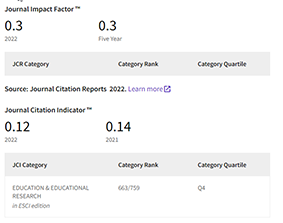Primary instruction reforms in the province of Goiás, Brazil, in the imperial period (1822-1889)
DOI:
https://doi.org/10.14516/ete.2015.002.001.013Keywords:
Province of Goiás, imperial period, primary instruction, laws and regulations of instructionAbstract
The Additional Act of 1834 established the representational councils in the provinces in the place of the general councils of the provinces and empowered them with important roles, within which, the role to legislate about public instruction and to create conditions to carry them out. So each province of the empire organized its own instruction, creating a varied net of public and private schools. In this context, the province of Goiás set up its educational legislation, of which, we point out the Law number 13 of 1835 as well as the regulations of instruction of 1835, 1856, 1869, 1884, 1886 and 1887. The present work proposed to analyze both the legislative content and the historical context which brought about the legislation. The applied methodology is bibliographical and documental analysis. The educational legislation of the Goiás province was decreed by the presidents unopposed of the Provincial Assembly. The opposition, when they existed, was carried out partly by the cultural and economical elite of the province, which envisaged to take up the political power and used the press to deliver its own critiques. It conquered enormous power in the 1880 decade through the Bulhões oligarchy. The production of various regulations was not sufficient to overcome the poor situation of the instruction in the province, considering the difficulty to put them into practice, without exception, mainly due to the lack of financial resources.
References
Abreu, S. E. A. de. (2006). A instrução primária na província de Goiás no século XIX. (Tese de Doutorado). Pontifícia Universidade Católica de São Paulo, São Paulo.
Almeida, J. R. P. de. (2000). Instrução pública no Brasil (1500-1889): história e legislação. São Paulo: EDUC.
Bretas, G. F. (1991). História da instrução pública em Goiás. Goiânia: CEGRAF-UFG.
Chizzotti, A. (1975). Origens da instrução publica no Brasil: análise interpretativa da legislação pública nas origens de sua constituição, seus pressupostos e implicações para a filosofia da educação. (Dissertação de Mestrado). Pontifícia Universidade Católica de São Paulo, São Paulo.
Faria Filho, L. M. de. (2003). Instrução Elementar no século XIX. In Lopes, E. M. T., Faria Filho, L. M. de, Veiga, C. G. (orgs.). 500 Anos de Educação no Brasil (pp. 135-150). Belo Horizonte: Autêntica.
Faria Filho, L. M. de. (2000). Dos pardieiros aos palácios: cultura escolar e urbana em Belo Horizonte na primeira república. Passo fundo: UPF.
Galli, U. (2004). A história da indústria gráfica em Goiás: 1830-2004. Goiânia: Contato comunicação.
Gama, Z. J., Gondra, J. G. (2006). Uma estratégia de unificação curricular: «os estatutos das escolas publicas de instrução primária (Rio de Janeiro – 1865). Recuperado em 16 de março. http//: www. file: //A:Educação%20On-Line%20-%20UMA%20 ESTRATÉGIA%20DE%20UNIFI...
Gondra, J., Sacramento, W., Garcia, I. (2000). Estado Imperial e educação escolar: rediscutindo a reforma Couto Ferraz, 1854. In I Congresso Brasileiro de História da Educação (pp. 1-13), Rio de Janeiro. (cd-room).
Haidar, M. de L. M.. (1972). O ensino secundário o Império brasileiro. São Paulo: Grijalbo.
Hilsdorf, M. L. S. (2003). História da educação brasileira: leituras. São Paulo: Pioneira Thomson Learning.
Moraes, M. A. S. A. (1974). História de uma oligarquia: os Bulhões. Goiânia: Oriente.
Schelbauer, A. R. (2005). O método intuitivo e lições de coisas no Brasil no século XIX. In: Stephanou, Maria; Bastos, Maria Helena Câmara. (org.). História e memória da educação no Brasil: século XIX (pp. 132-149). Petrópolis: Vozes.







